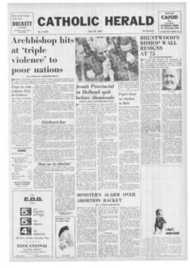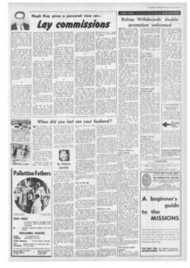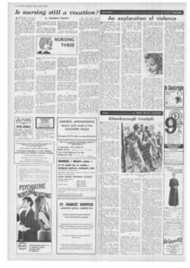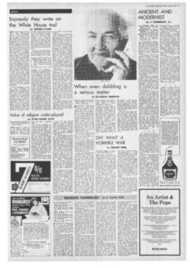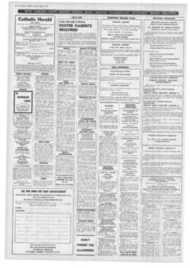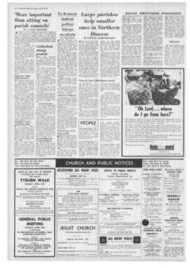Page 9, 18th April 1969
Page 9

Report an error
Noticed an error on this page?If you've noticed an error in this article please click here to report it.
Tags
Share
Related articles
A Marriage Of Ancient And Modern
Catholics And Oxford
Bombs On Palestine And An Invasion
Andre Gushurst-moore Is Not Persuaded By A Postmodernist...
The Church And The New Paganism
ANCIENT AND MODERNIST
by T. CORBISHLEY, S.J.
The Modernist Crisis: von Hiigel by John J. Heaney (Chapman 42s.) Augustinianism and Modern Theology by Henri de Lubac, S.J. (Chapman 63s.) Black Robes in Lower California by Pater Masten Dunne, S.J. (C.U.P. (for University of California Press) £5 9s. 6d.) AHAPHAZARD SELECTION of books, it might seem. Yet, diverse as their subject-matter is, a study of them together provides as good a way as any to a deeper appreciation of the life of the Church in several important aspects.
Fr. Heaney's study of the thought of Baron von Hugel and its relation to the Modernist movement of the years between 1890 and 1910 is of immense topical interest. The ferment in the Church today can be seen as a more widespread development of an activity that, at the beginning of the century, was confined to a relatively small handful of professional theologians and an even smaller number of lay sympathisers.
Baron Friedrich von Hiigel, through his close personal connection with most of the leading figures in the Church of the time as well as through his intellectual affinities, was inevitably associated with the ideas and speculations which were to lead men like Loisy and Tyrrell to open breach with the Church.
The question that faces the biographer of von Hugel is why he too did not find himself so much at odds with the teaching and conduct of the institutional Church that he felt himself obliged to abandon his allegiance. The answer is complex but Fr. Heaney's stuay enables us to see that it was neither cowardice n o r dishonesty that prevented him from going all the way with his friends. Rather must we see that, in the nature of things, he could remain true to himself only by accepting the Church, with all its known imperfections, as yet embodying for him the revelation of Christ. The one thing that mattered for him was the interior life, his personal relationship with God — who is. at the same time 'absolutely unfathomable and incomprehensible'.
The search for God. or rather the acceptance of God's self-revelation, is a process that operates at several levels, not least through the teaching of the Church. Whilst he fully accepted the responsibility of scholars to use their skills to promote and deepen this process, the last word did not remain with them. He was conscious of the danger of mere cleverness and saw the Church as a protection against that danger.
He said, towards the end of his life; ". . . membership of the Church protected me from scepticism and psychological
self-inflation . ." Moreover, since the way to God was necessarily a 'costing' trial, one aspect of which was the friction produced by tension between the known and the unknown, the price of belonging to a Church seen to be imperfect was inevitable — "a price so great that only a stronger belief can pay it" Father Heaney's study is wide-ranging and full of good things. It is less well-organised than one could wish, and it is marred by blemishes such as the translation of the French conscience by conscience. where it clearly means con sciousness. Even so, it provides a valuable addition to our understanding of a great Christian and Catholic apologist.
Father de Lubac's study of
Augustinianism, it goes without saying, is magisterial and comprehensive. Few topics are more important in the whole realm of theology than the relationship between the natural and the supernatural. It was an inadequate appreciation of this relationship which led to the one-sided development which produced the whole `secularist' reaction in the twentieth century, just as it was
a misunderstanding o f Augustine which led to the excesses of Calvinism and Jansenism.
It is important to say this, since there is a real possibility of regarding works like the present one as irrelevant to the contemporary situation in the Church. It is true that much of Fr de Lubac's argument is directed to the controversies of the sixteenth and seventeenth centuries. But the fact remains that a proper understanding of the issues at stake in those controversies helps us to appreciate more fully the role of the Church in defending the realities of human freedom and of human goodness by relating them to the overriding influence of divine love.
Finally, in Black Robes in Southern California, we see The Church in action, bringing to primitive savages the benefits of a higher culture along with the message of the Gospel. It is the story of the early Jesuit missionary activity in the peninsula of Baja California, which, despite its name, is part of Mexico, having been originally discovered by Cortes. Fr. Dunne's work on Jesuit missions in Mexico and on the West Coast is obviously important as a piece of pioneering
scholarship. Its 1 as ting significance for the average reader is the witness it bears to the unflagging zeal of the Church.
blog comments powered by Disqus


